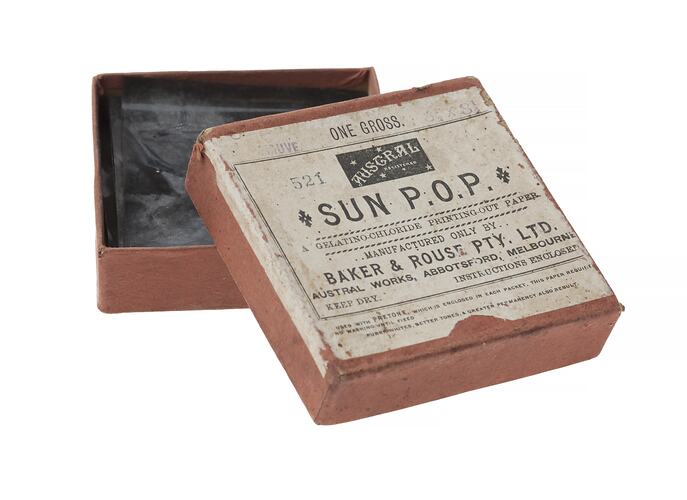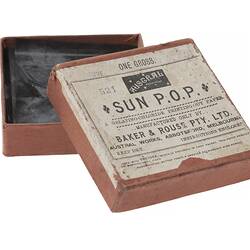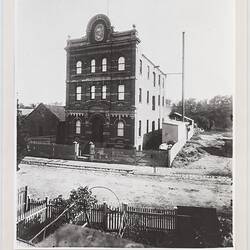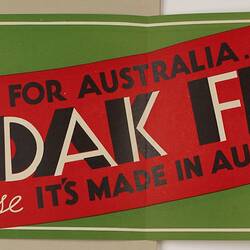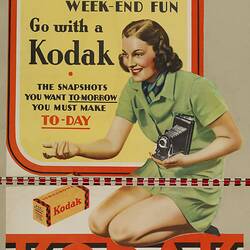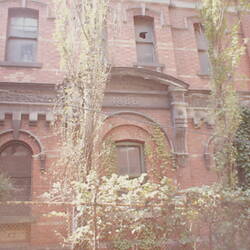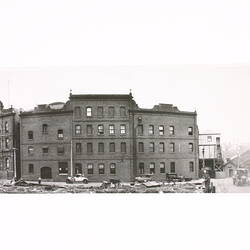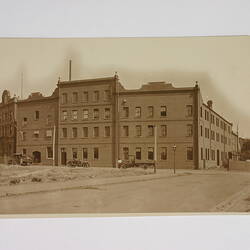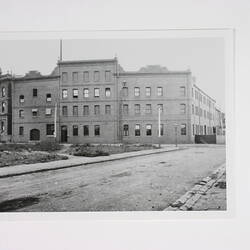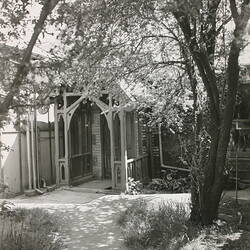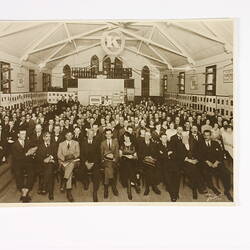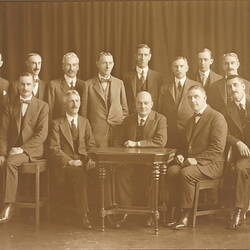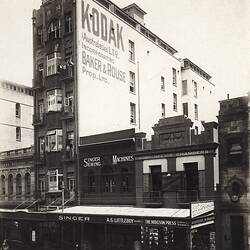In 1884 Mr Thomas Baker, a thirty year old registered pharmaceutical chemist, began making photographic dry plates at his home 'Yarra Grange' by the Yarra River in Abbotsford, Melbourne, under the name the Austral Plate Company. Between 1885 and 1891 the company also operated a retail outlet at 190 Russell Street in the city.
In 1887 Baker formed a partnership with John J Rouse, and in 1908 their highly successful business merged with Eastman Kodak. The resulting company ultimately evolved into Kodak (Australasia) Pty Ltd, which has been a significant manufacturer and distributor of photographic products in Australia, and an important educator in regard to the practice of photography.
When Baker met John J (JJ) Rouse (born 1861) Rouse was working as an accountant and sales manager for a Sydney photographic merchant and an importer at a branch store in Melbourne. The partnership between the two men allowed Baker to expand the photographic manufacturing and retail business. Baker concentrated on improvements to the manufacturing of plates and production in the laboratory whilst Rouse set up a network of retail outlets.
In about 1886 Baker's photographic business had moved from the Baker home into a three-storey factory building nearby, to accommodate its 10 employees. By 1887, under the new partnership with Rouse, the factory was producing a new bromide paper, known as Austral Pearl Bromide, which replaced albumen paper, previously the dominant photographic paper. By the 1900s the factory was producing bromide and gaslight papers, negative materials, mounts, envelopes, and ready mixed chemicals.
The business continued to expand as Baker and Rouse took over existing companies or trade outlets. They imported Eastman products from London and in 1888 obtained a trade agency for the American Eastman products, which they successfully sold. Baker and Rouse opened new stores and branches in Melbourne, Adelaide, Brisbane, Hobart, and Sydney. Between 1887 and 1900 they had outlets at fourteen locations. Their first wholesale and retail store opened at 37 Collins Street Melbourne, where Lichtner & Co, a photographic supply store had operated. In 1894 the company became known as the Baker and Rouse Australia Laboratory.
Due in part to the success of sales at Baker and Rouse of Eastman products, Kodak Limited opened its own branch in Melbourne in 1900, at 284-286 Collins Street. However, the store did not match the sales figures of Baker and Rouse, which continued with good sales. Contributing to Kodak Limited losses were the high tariffs imposed at the time on imported films.
After Thomas Baker visited George Eastman in Rochester, Baker and Rouse was appointed the sole Australian agents for Eastman Kodak products in 1905. The agreement included the sale to Baker and Rouse of the Kodak Limited store in Collins Street. In return Baker and Rouse agreed to purchase a certain percentage of Kodak products directly from Rochester, rather than London. A clause in the agreement provided that at a suitable time Kodak could purchase Baker and Rouse. That time came in 1908, after further import tariffs introduced in 1907 greatly increased the cost of imported goods. Baker travelled to Rochester and convinced Eastman on the benefits of a merger between Baker and Rouse and Eastman Kodak to form Australia Kodak Limited. Baker saw the merger as an opportunity to upgrade and expand the factory in Abbotsford. Eastman saw this as a way of avoiding tariff imports by manufacturing and finishing products in Australia.
The newly merged company became Australian Kodak Limited, and later in 1911 Kodak (Australasia) Limited, then finally in 1920 Kodak (Australasia) Pty Ltd. Both Baker and Rouse continued to play leading executive roles in the company, and after Baker's death, John Rouse's son Edgar took on the role of Managing Director and Abbotsford Factory Manager, and later became Chairman and Chief Managing director.
The two men in the original Baker and Rouse partnership had very different personalities. Baker was said to be reserved whilst Rouse was athletic and outgoing. After Baker's unexpected death on 4 December 1928, Rouse wrote to George Eastman 'During this long partnership he (Baker) never interfered with me, and never took my part in the running of the works. Although we were entirely different dispositions we had only one subject in view, namely the success of the firm'.
References:
Kodak (Australasia) Pty Ltd, 'Kodak in Australia', June 1975 (HT 31586)
Lowe, T (1974). The Thomas Baker, Alice Baker and Eleanor Shaw Medical Research Institute: The First Fifty Years, Trustees of the Institute, Melbourne, pp. 9-10
Davies, A & Stanbury, P (1986). The Mechanical Eye in Australia Photography 1841-1900, Oxford University Press, p. 54.
Beale, N, (no date). History of Kodak, in Possession of Kodak Australia, Melbourne.
More Information
-
Keywords
-
Authors
-
Contributors
-
Article types
